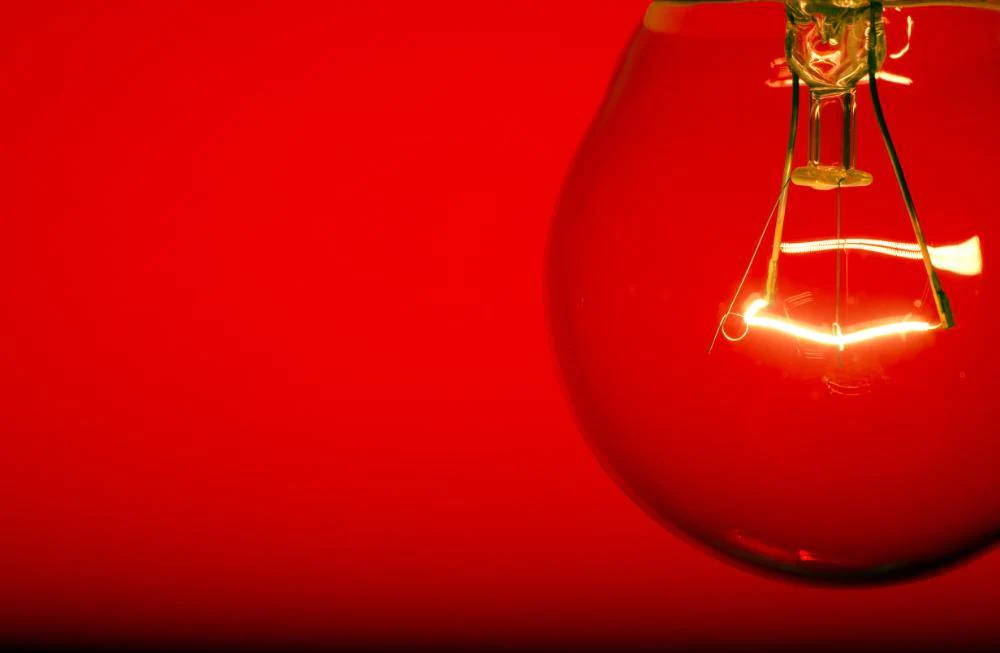
You’ve probably heard red light therapy called a miracle medicine, the fountain of youth, or the holy grail of health (Glamour). While that might sound like an exaggeration, science is proving there’s truth behind the hype. From skin rejuvenation to pain relief and weight loss, red light therapy is gaining traction as an effective, non-invasive treatment.
With rising demand, the market has exploded with products—many of which don’t actually work. It’s easy to be tempted by a $40 red light therapy lamp, but we can say with certainty: you won’t see results. Before long, that lamp will be collecting dust, and you’ll be telling everyone red light therapy is a scam.
So, how do you separate real red light therapy devices from cheap knockoffs? Let’s break it down.

Incandescent, Fluorescent, Halogen: Why They Don’t Work
To understand what makes real red light therapy effective, you need to know how different bulbs work.
Red light therapy works by delivering concentrated wavelengths of red and near-infrared (NIR) light deep into the skin. Incandescent, fluorescent, and halogen bulbs can’t do this (Britannica).
- These bulbs emit light across the entire visible spectrum, which is why they glow white.
- They spread light in all directions, meaning almost no light penetrates the skin.
- They emit low-dose UV radiation, which can cause cumulative skin damage (NCBI).
- Any red hue in these bulbs comes from a painted or tinted coating, not true red or NIR wavelengths.
Bottom line: Incandescent, fluorescent, and halogen bulbs are not red light therapy.
LED Light Bulbs: The Gold Standard for Red Light Therapy
LEDs (light-emitting diodes) work by passing electricity through a semiconductor, producing highly targeted light wavelengths (HowStuffWorks). Unlike traditional bulbs, LEDs:
- Emit light at precise wavelengths for therapeutic benefits.
- Direct light in a beam instead of scattering it in all directions.
- Do not emit UV radiation, making them safer for long-term use.
LEDs revolutionized lighting in the 2000s, but not all LEDs are created equal—especially for red light therapy.
What to Look for in a Red Light Therapy Device
If you search for red light therapy on Amazon, you’ll find cheap LED lamps claiming to offer therapeutic benefits. But most of them fall short. Here’s why:
- Wavelength Accuracy Matters – True red light therapy operates at ~660nm (red light) and ~850nm (NIR light). Many cheap products don’t deliver these exact wavelengths or mix in ineffective ones.
- LED Power & Density – The more LEDs and the higher the power output, the more effective the treatment.
- Beam Angle – The best red light therapy panels focus light into a concentrated beam, ensuring deep penetration. Many cheap LEDs diffuse light too widely, reducing effectiveness.
- Energy Output & Density – This determines how much light actually reaches your tissues. If it’s too weak, it won’t be effective.
Cheap, unverified devices won’t give you results, which is why choosing a reputable brand is essential.
Why Rouge Red Light Therapy Stands Out
Rouge’s red light therapy panels have been independently tested to ensure they meet the highest therapeutic standards.
- Clinically tested wavelengths (~660nm red and ~850nm NIR)
- Higher power output than competing brands
- More LEDs for greater coverage
- Optimized beam angle for deeper penetration
We didn’t just test our own panels—we compared them to other leading brands, and Rouge outshines the competition (see the results).

Ready for Real Results?
Don’t waste time (or money) on ineffective devices. Rouge red light therapy panels deliver the wavelengths, power, and precision you need for real therapeutic benefits.
Shop Rouge Red Light Therapy Panels and experience the difference.


Great post
———
Rouge Canada replied:
Thank you :)
Margaret
margaret@rouge.care
Visit us at rouge.care
Thanks for the info on red light therapy. I want to use it, but can’t afford it.